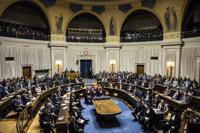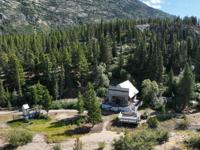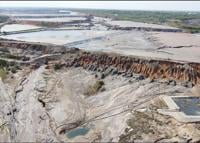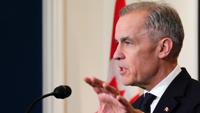ST. JOHN'S, N.L. - A multibillion-dollar megaproject in Newfoundland is one step closer to becoming Canada’s first commercial green hydrogen operation, but some in the country’s easternmost province wonder whether their government has learned from its mistakes.
World Energy GH2, the company leading the project, is aware there are concerns about Project Nujio’qonik, said chief executive Sean Leet. But he said there are reasons for people to have faith in the company.
"We're from here," he told reporters on Wednesday. "We're here to build a project that the community and the province will be proud of."
The Liberal Newfoundland and Labrador government approved the US$12-billion project's environmental assessment on Tuesday, as companies in Atlantic Canada race to become the country's first exporter of hydrogen developed with renewable energy. The province of about 530,000 people is home to four offshore oilfields, and advocates have long called on the government to wean itself off oil royalties and instead turn the province's famously ferocious winds into power — and revenue.
But Project Nujio’qonik has been controversial almost since it was first proposed. The first two phases of development would involve windfarms of at least 150 turbines built on Newfoundland's Port au Port Peninsula and in the nearby Codroy Valley, on the island's west coast. Those turbines would power a hydrogen and ammonia production plant, to be built in Stephenville, N.L., located about 145 kilometres northeast of Codroy.
The experimental project would exploit a massive rural area of Newfoundland as a testing ground for the benefit of a private company, said Nick Mercer, an assistant environmental science professor at the University of Prince Edward Island.
Mercer, who grew up in Newfoundland and Labrador, is a member of Enviro Watch N.L., a group that has been vocally opposed to World Energy's proposal. He said they worry Project Nujio’qonik doesn't come with enough benefits or control for the communities it will impact.
A transition away from oil is "inevitable" for the province, Mercer said in an interview.
"Just transitions, however, are not inevitable," he said. "If we build the renewable energy future with the same capitalist and extractive values of the fossil fuel era, we're going to end up with the exact same social and economic inequity."
Bill Montevecchi, a seabird scientist at Memorial University in St. John's, said he's concerned about the impacts the project will have on an ecologically sensitive area.
Project Nujio’qonik is just too big, he said. The province's troubles with the Muskrat Falls hydroelectric dam have shown that "bigger is better" has not proven true for Newfoundland and Labrador, he added.
"It's clear when you look at these megaprojects, in terms of economics, bigger is always more risky," Montevecchi said in an interview. "And there's no question that we're probably in a high risk situation right now."
The Muskrat Falls hydroelectric dam was greenlit in 2012 by the province's then-Progressive Conservative government, with an estimated price tag of about $7.4 billion. Its cost has since ballooned to more than $13 billion.
Though it was finally declared to be in working order last year, there are persistent problems with some of its components, and its staggering cost has loomed large over the province's finances for years.
As he spoke to reporters Wednesday, Leet appeared unfazed by the criticisms that have plagued Project Nujio’qonik. There will be "questions" about any megaproject, he said.
"We appreciate that dialogue, so we continue to engage with those folks that have questions or concerns," he said. "I think we enjoy a great amount of support in the local area."
He said the company has already invested about $100 million into the project and would likely make a final decision in early 2025 about whether it will proceed.
This report by ´ºÉ«Ö±²¥was first published April 10, 2024.








































